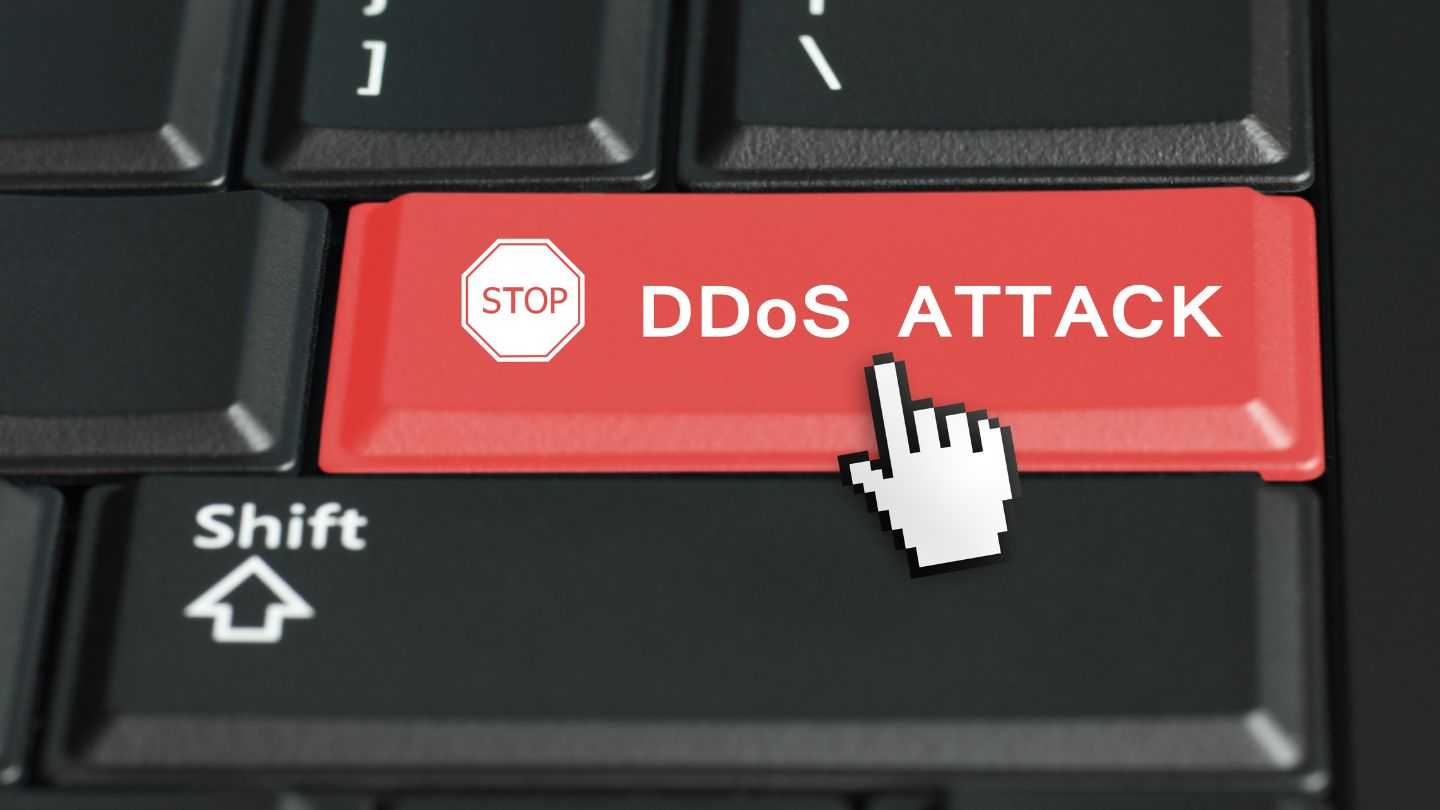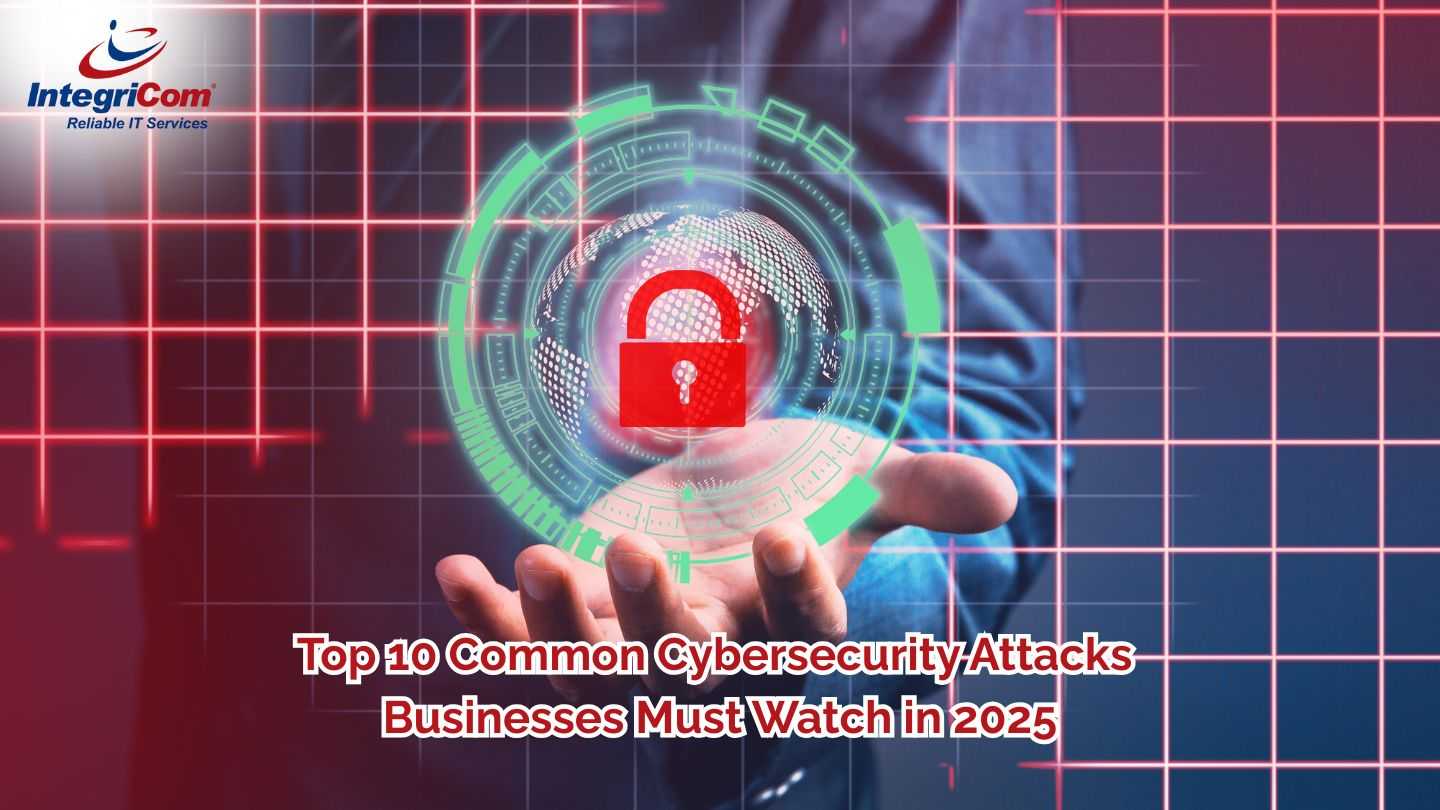Cybersecurity threats compromise systems and steal data. Knowing the most common threats is essential to safeguard information and ensure business continuity. This blog highlights key cybersecurity threats and the importance of a professionally managed defense strategy.
Key Takeaways
- Cybersecurity threats can cause major financial losses and data breaches, demanding proactive security efforts from businesses.
- Common cyber threats include malware, phishing, ransomware, and insider risks, all of which require layered defenses and expert monitoring.
- Protecting against cybersecurity threats calls for real-time surveillance, managed IT support, and a strong culture of cybersecurity awareness.
Understanding Cybersecurity Threats
Cyber threats encompass tactics aimed at disrupting IT systems, stealing data, or compromising operations. Organizations must understand the broad spectrum of threats in today’s hyper-connected landscape. These attacks often lead to serious financial losses, reputational harm, and operational downtime. Cybercriminals operate with varying levels of sophistication—some scan for vulnerabilities indiscriminately, while others conduct in-depth research to exploit specific targets using open-source intelligence and social engineering. These threats affect everything from personal accounts to enterprise infrastructure, and their growing scale and complexity are undeniable. It is essential to understand the latest cyber threats and how to combat them in 2025. By 2028, global cybercrime costs are expected to exceed $13 trillion. This alarming trend underscores the need for modern businesses to adopt enterprise-grade cybersecurity strategies, including endpoint protection, advanced firewalls, and continuous threat monitoring, all deployed through professionally managed IT solutions.
Malware Attacks
 Malware refers to software designed to infiltrate, damage, or exploit systems. Common forms include viruses, worms, trojans, spyware, ransomware, and keyloggers. Each type of malware carries the potential to disrupt operations or extract confidential information. Sophisticated malware often enters systems unnoticed—through harmful links, malicious downloads, or email attachments. Some variants, like drive-by downloads, can infect devices simply by visiting compromised websites. These attacks exploit unprotected systems, allowing hackers to control devices remotely or spread to broader networks. Mitigating malware threats requires more than basic antivirus tools. IT professionals deploy layered defenses such as endpoint detection and response (EDR), secure gateways, and regular patch management. These coordinated efforts are essential to prevent infiltration and preserve data integrity.
Malware refers to software designed to infiltrate, damage, or exploit systems. Common forms include viruses, worms, trojans, spyware, ransomware, and keyloggers. Each type of malware carries the potential to disrupt operations or extract confidential information. Sophisticated malware often enters systems unnoticed—through harmful links, malicious downloads, or email attachments. Some variants, like drive-by downloads, can infect devices simply by visiting compromised websites. These attacks exploit unprotected systems, allowing hackers to control devices remotely or spread to broader networks. Mitigating malware threats requires more than basic antivirus tools. IT professionals deploy layered defenses such as endpoint detection and response (EDR), secure gateways, and regular patch management. These coordinated efforts are essential to prevent infiltration and preserve data integrity.
Ransomware Attacks
Ransomware is a severe form of malware that encrypts files or locks users out of systems until a ransom is paid. These attacks typically occur through infected email attachments or malicious websites, rendering systems inaccessible. Between 2023 and 2024, ransomware incidents increased by over 80%, with schools and public institutions seeing a sharp rise. The financial impact, combined with operational paralysis, makes ransomware one of the most dangerous cyber threats today. To combat this, cybersecurity professionals deploy real-time monitoring, secure backups, endpoint protection, and anti-ransomware tools. These coordinated defenses, coupled with rapid response protocols, significantly reduce the likelihood and impact of such attacks.
Trojans and Spyware
Trojans appear as legitimate software but carry malicious intent. Once installed, they allow attackers unauthorized access to systems. Spyware, on the other hand, stealthily records user activity, including keystrokes, browsing habits, and login credentials. These threats are hard to detect and can operate silently for long periods. Professionals use behavioral analytics, zero-trust policies, and application control to block trojan-based intrusions. Similarly, anti-spyware solutions and proactive monitoring help neutralize spyware before sensitive data is compromised. A particularly dangerous form, stalkerware, enables personal surveillance and is often linked to abusive behavior. Its existence highlights the necessity of expert intervention in managing device security, especially for organizations handling private or regulated data. Read More: What is Defense in Depth (DiD) in Cybersecurity? A Comprehensive Guide
Phishing and Social Engineering Attacks
Social engineering relies on psychological manipulation to deceive individuals into sharing sensitive information. Phishing emails, fake websites, and fraudulent calls are some common methods used to extract credentials or financial details. These threats bypass technical defenses by targeting people instead of systems. IT professionals respond with email filtering solutions, simulated phishing campaigns, and targeted training programs. Security awareness is embedded into company culture, equipping users to detect suspicious activity and avoid falling victim. By fostering a security-first mindset and employing real-time threat detection tools, businesses can significantly reduce the success rate of social engineering attacks.
Spear Phishing Attacks
Spear phishing is a more refined phishing technique that targets specific individuals or organizations with personalized messages. These attacks often appear highly credible and can deceive even experienced users. Whaling, a form of spear phishing, focuses on executives or decision-makers who hold critical access. These attacks can lead to unauthorized data access or financial transfers if left unchecked. Defending against spear phishing requires multi-layered email authentication, identity protection, and executive-level awareness training. Managed security providers also utilize threat intelligence tools to track targeted campaigns and stop them before damage occurs.
Business Email Compromise
BEC involves impersonating senior staff or vendors to trick employees into transferring funds or revealing sensitive data. Unlike broad phishing attacks, BEC relies on trusted communication channels and sophisticated social engineering. BEC incidents have caused billions in global losses. Detection is difficult, as these emails often appear genuine. Organizations counter this by implementing domain authentication, role-based access controls, and user verification protocols. IT providers also deploy anomaly detection systems to flag irregular communication patterns, reducing the risk of financial or reputational fallout. Read More: Phishing Types and How to Prevent Them Effectively
Denial-of-Service (DoS) and Distributed Denial-of-Service (DDoS) Attacks
 DoS and DDoS attacks aim to overwhelm systems with traffic, making services unavailable to users. DDoS attacks, in particular, involve coordinated networks of compromised devices (botnets) and can shut down websites or apps for hours. Application-layer DDoS attacks target specific services, consuming bandwidth and processing power. More advanced forms, like teardrop attacks, exploit server vulnerabilities through fragmented data packets. To defend against these disruptions, IT teams implement traffic filtering, geo-blocking, content delivery networks (CDNs), and load-balancing solutions. Additionally, managed services ensure incident response plans are in place to restore operations swiftly.
DoS and DDoS attacks aim to overwhelm systems with traffic, making services unavailable to users. DDoS attacks, in particular, involve coordinated networks of compromised devices (botnets) and can shut down websites or apps for hours. Application-layer DDoS attacks target specific services, consuming bandwidth and processing power. More advanced forms, like teardrop attacks, exploit server vulnerabilities through fragmented data packets. To defend against these disruptions, IT teams implement traffic filtering, geo-blocking, content delivery networks (CDNs), and load-balancing solutions. Additionally, managed services ensure incident response plans are in place to restore operations swiftly.
Man-in-the-Middle (MitM) Attacks
MitM attacks occur when cybercriminals intercept and alter communication between two parties without their knowledge. Common techniques include session hijacking, packet sniffing, DNS spoofing, and SSL stripping. These attacks can lead to data theft, altered transactions, or unauthorized access to corporate accounts. Professionals combat MitM threats using strong encryption, secure tunneling protocols, multi-factor authentication, and certificate validation. Ongoing traffic analysis and intrusion prevention systems (IPS) help identify anomalies in real-time, enabling fast intervention before harm is done.
SQL Injection Attacks
SQL injection involves inserting malicious code into web forms or URLs to manipulate databases. These attacks exploit improper input validation and can result in data theft, corruption, or deletion. Types of SQL injection include blind, error-based, and time-based methods. Attackers use these to bypass authentication or access sensitive records. Web developers and IT teams use prepared statements, input validation, and web application firewalls (WAFs) to mitigate risk. Frequent vulnerability assessments and patching routines are also key components of a strong defense. Read More: Cybersecurity vs Cyber Resilience: What’s the Difference?
Insider Threats
Insider threats stem from current or former employees, contractors, or third parties misusing their access. These threats may be malicious—motivated by profit or revenge—or unintentional, caused by human error. The danger lies in insiders’ legitimate access to systems, making detection challenging. Security teams use user behavior analytics (UBA), access controls, and strict privilege management to monitor and restrict system usage. Regular audits, security education, and zero-trust network architectures also help reduce the risks associated with insider activity.
Advanced Persistent Threats (APTs)
APTs are long-term, highly targeted cyberattacks carried out by skilled adversaries, including nation-state actors. These attacks involve multiple stages—from infiltration to data exfiltration—and often persist undetected for months. APTs aim to steal intellectual property, monitor communications, or disrupt critical infrastructure. Defending against them requires endpoint monitoring, deception technologies, network segmentation, and threat-hunting practices. Due to their sophistication, APTs are best handled by security operations centers (SOCs) and managed detection and response (MDR) services.
Supply Chain Attacks
Supply chain attacks target third-party vendors or software providers to indirectly breach larger organizations. These attacks inject malicious code into trusted applications, which are then distributed across networks. From 2021 to 2023, supply chain attacks rose by over 400%, reflecting their growing danger. Businesses often struggle to assess the security posture of their suppliers, making them vulnerable. Professional IT teams conduct third-party risk assessments, enforce vendor access controls, and monitor software integrity through code audits. Industries like manufacturing, which rely on automated systems, are especially vulnerable and benefit from enhanced vendor vetting and IT support.
Protecting Against Cybersecurity Threats
 An effective cybersecurity strategy requires professional oversight, multiple layers of protection, and continuous monitoring. This includes next-gen firewalls, encryption protocols, intrusion detection systems, and endpoint security solutions. Regular training ensures employees recognize threats like phishing and understand best practices for using devices and networks securely. Strong password management, secure VPN use, and multi-factor authentication further bolster organizational security. Cybersecurity professionals also implement 24/7 threat monitoring and conduct incident response drills to stay prepared. Through managed services, businesses can proactively identify, contain, and neutralize threats before they cause damage. Read More: How a Managed IT Services Provider Builds Multi-Layered Cybersecurity for Your Business
An effective cybersecurity strategy requires professional oversight, multiple layers of protection, and continuous monitoring. This includes next-gen firewalls, encryption protocols, intrusion detection systems, and endpoint security solutions. Regular training ensures employees recognize threats like phishing and understand best practices for using devices and networks securely. Strong password management, secure VPN use, and multi-factor authentication further bolster organizational security. Cybersecurity professionals also implement 24/7 threat monitoring and conduct incident response drills to stay prepared. Through managed services, businesses can proactively identify, contain, and neutralize threats before they cause damage. Read More: How a Managed IT Services Provider Builds Multi-Layered Cybersecurity for Your Business
Summary
In conclusion, understanding and preparing for cybersecurity threats is vital for protecting your business operations and sensitive information. From malware and phishing to insider threats and supply chain vulnerabilities, each type of threat presents distinct challenges that demand expert intervention. IntegriCom is dedicated to helping businesses stay ahead of these challenges by offering comprehensive cybersecurity services in Atlanta. With a blend of physical security systems, continuous monitoring, and expert IT support, we provide an integrated approach to defending against the ever-evolving digital landscape. Contact us today to fortify your defenses against cyber threats.
Frequently Asked Questions
1. What’s the difference between phishing and spear phishing?
Phishing targets large groups, while spear phishing focuses on specific individuals using tailored messages.
2. How do IT professionals detect insider threats?
They use behavior analytics, privilege management, and continuous monitoring to track suspicious activity.
3. Why is professional cybersecurity better than using only antivirus software?
Professional solutions include layered protection, threat intelligence, and real-time response—far beyond basic tools.


